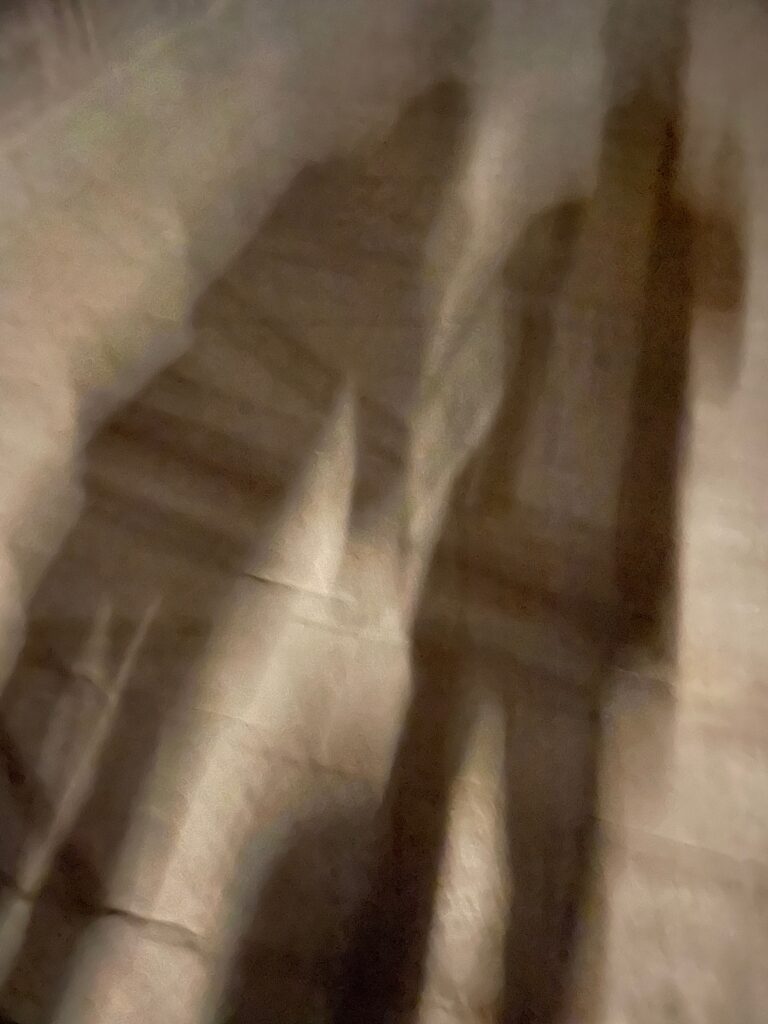As in the line from Mr. Zimmerman. If you weren’t paying attention, you’d think this was off-topic.
In, uh… celebration isn’t the right word but, of California deciding that locking people up is more important than educating them, we re-visit Michel Foucault’s 1974 tract, Discipline and Punish: The Birth of the Prison. While not at all required reading, it can be fun. If you see it in Barnes & Whatever, it’s worth picking up and reading the intro wherein he describes a mid-eighteenth century instance of a condemned man being drawn-and-quartered. Really, the things you pick up.
This is from the 3rd section of Part Three, entitled Panopticism:
If it is true that the leper gave rise to rituals of exclusion, which to a certain extent provided the model for and general form of the great Confinement, then the plague gave rise to disciplinary projects. Rather than the massive, binary division between one set of people and another, it called for multiple separations, individualizing distributions, an organization in depth of surveillance and control, an intensification and a ramification of power. The leper was caught up in a practice of rejection, of exile-enclosure; he was left to his doom in a mass among which it was useless to differentiate; those sick of the plague were caught up in a meticulous tactical partitioning in which individual differentiations were the constricting effects of a power that multiplied, articulated and subdivided itself; the great confinement on the one hand; the correct training on the other. The leper and his separation; the plague and its segmentations. The first is marked; the second analysed and distributed. The exile of the leper and the arrest of the plague do not bring with them the same political dream. The first is that of a pure community, the second that of a disciplined society. Two ways of exercising power over men, of controlling their relations, of separating out their dangerous mixtures. The plague-stricken town, traversed throughout with hierarchy, surveillance, observation, writing; the town immobilized by the functioning of an extensive power that bears in a distinct way over all individual bodies – this is the utopia of the perfectly governed city. The plague (envisaged as a possibility at least) is the trial in the course of which one may define ideally the exercise of disciplinary power. In order to make rights and laws function according to pure theory, the jurists place themselves in imagination in the state of nature; in order to see perfect disciplines functioning, rulers dreamt of the state of plague. Underlying disciplinary projects the image of the plague stands for all forms of confusion and disorder; just as the image of the leper, cut off from all human contact, underlies projects of exclusion.
They are different projects, then, but not incompatible ones. We see them coming slowly together, and it is the peculiarity of the nineteenth century that it applied to the space of exclusion of which the leper was the symbolic inhabitant (beggars, vagabonds, madmen and the disorderly formed the real population) the technique of power proper to disciplinary partitioning. Treat ‘lepers’ as ‘plague victims’, project the subtle segmentations of discipline onto the confused space of internment, combine it with the methods of analytical distribution proper to power, individualize the excluded, but use procedures of individualization to mark exclusion – this is what was operated regularly by disciplinary power from the beginning of the nineteenth century in the psychiatric asylum, the penitentiary, the reformatory, the approved school and, to some extent, the hospital. Generally speaking, all the authorities exercising individual control function according to a double mode; that of binary division and branding (mad/sane; dangerous/harmless; normal/abnormal); and that of coercive assignment of differential distribution (who he is; where he must be; how he is to be characterized; how he is to be recognized; how a constant surveillance is to be exercised over him in an individual way, etc.). On the one hand, the lepers are treated as plague victims; the tactics of individualizing disciplines are imposed on the excluded; and, on the other hand, the universality of disciplinary controls makes it possible to brand the ‘leper’ and to bring into play against him the dualistic mechanisms of exclusion. The constant division between the normal and the abnormal, to which every individual is subjected, brings us back to our own time, by applying the binary branding and exile of the leper to quite different objects; the existence of a whole set of techniques and institutions for measuring, supervising and correcting the abnormal brings into play the disciplinary mechanisms to which the fear of the plague gave rise. All the mechanisms of power which, even today, are disposed around the abnormal individual, to brand him and to alter him, are composed of those two forms from which they distantly derive.
Bentham’s Panopticon is the architectural figure of this composition. We know the principle on which it was based: at the periphery, an annular building; at the centre, a tower; this tower is pierced with wide windows that open onto the inner side of the ring; the peripheric building is divided into cells, each of which extends the whole width of the building; they have two windows, one on the inside, corresponding to the windows of the tower; the other, on the outside, allows the light to cross the cell from one end to the other. All that is needed, then, is to place a supervisor in a central tower and to shut up in each cell a madman, a patient, a condemned man, a worker or a schoolboy. By the effect of backlighting, one can observe from the tower, standing out precisely against the light, the small captive shadows in the cells of the periphery. They are like so many cages, so many small theatres, in which each actor is alone, perfectly individualized and constantly visible. The panoptic mechanism arranges spatial unities that make it possible to see constantly and to recognize immediately. In short, it reverses the principle of the dungeon; or rather of its three functions – to enclose, to deprive of light and to hide – it preserves only the first and eliminates the other two. Full lighting and the eye of a supervisor capture better than darkness, which [it] ultimately protected. Visibility is a trap.


